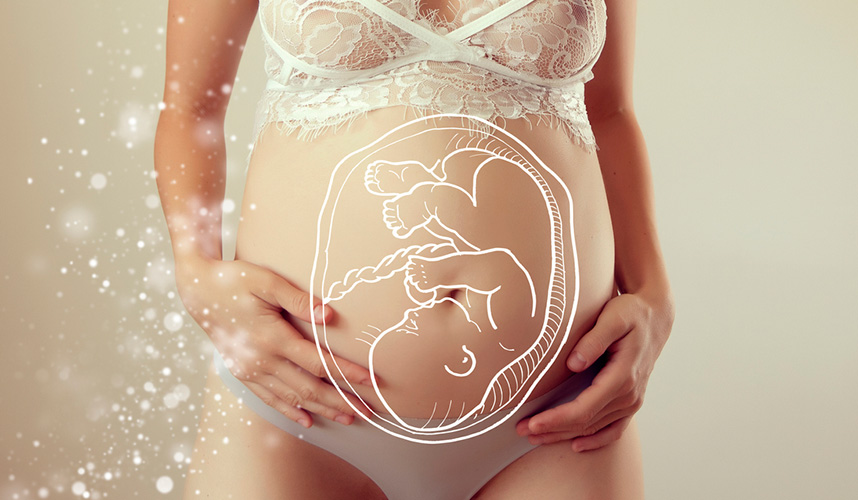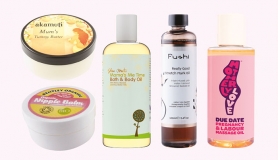Before my first son was born I did a lot of research on gentle parenting and the non severance practice of lotus birth. This is where the umbilical cord and placenta remain attached to the baby postpartum, enabling the baby to stay with their `twin’ until they see fit to separate.
A gentle transition between being in the womb and coming earthside, it seemed like a good idea for us.
In the end we decided to delay cord clamping. We waited until the umbilicus had ceased to pulsate, therefore allowing our baby to receive all of his blood and oxytocin.
However, seven months later, I was blessed to be carrying another son and this time I knew that I wanted this child to be lotus born.
Whilst pregnant I read about the positives of this peaceful practice; increased foetal blood volume, lower rates of anaemia, little to no loss of birth weight and a peacefully alert baby.
My waters broke at exactly 41 weeks, and just over five hours later I caught a beautiful 9lb 15oz baby boy at my local midwifery led birthing unit. He was a water birth and I needed no pain relief.
I was able to stay in the pool until I had completed the 3rd stage of labour and transferred out of the pool holding my baby. My husband stayed close and held the placenta in a bowl, making sure that it stayed level with Wolfy to maintain optimum position for blood transferral.
He had his physiological check done on my lap, he was so peaceful and yet so alert, drinking in the room as if he had seen it all before.
A couple of hours later we were sent home. We placed the placenta in a terry towel and wrapped it up before placing it into a special bag I had made. Twice a day my husband diligently replaced the sea salt which covered the placenta and placed 3-4 drops of lavender oil onto it.
I had read that babies react when the placenta is touched by becoming more alert, and that is exactly what Wolfy did, even when sleeping.
To begin with I was concerned about breastfeeding, as I was unsure what to do with the cord, but with nobody to ask I followed my instincts and moved it to the opposite side of him. This caused no complications and because I was in bed with him I was able to minimise the amount of movement to the cord.
Over the next four days I watched the cold-pasta-textured umbilical cord shrink to dry spaghetti. The cord site was the same as if it had been cut, getting thinner by the day until, on day 4, Wolfy placed his foot on it a little way down and kicked it off. He gave a small cry as if to say goodbye, and became his own singular being.
Having experienced both a delayed cord clamp and a lotus birth, I would definitely recommend a lotus birth; the gentlest, healthiest way to introduce a baby from their world into ours.
Emily is a stay at home mum of two boys aged 20 months and three months.
HOW TO HAVE A LOTUS BIRTH
- After the baby is born, the cord is not clamped and after the placenta is born, the placenta and cord are kept intact.
- There is no rush to do anything with the placenta - it is often just wrapped in a soft cloth near the mother during the precious first hours of bonding.
- Then, at some point the placenta is placed in a special bowl or wrapped in a ceremonial cloth (it is helpful to rinse it first, and remove clots). Powdered herbs such as lavender, goldenseal, rosemary or tulsi may be applied for preservation during the drying process, and re-applied daily. Sea salt is also used on both sides to aid drying and minimize scent.
- Some mothers prefer to leave the placenta in a special bowl, near them in the bed. The sturdy, flexible cord mostly dries out within a few hours of birth.
READ MORE: Gentle Birth, Gentle Mothering by Sarah J. Buckley for stories of her children’s lotus births
Placenta: The Forgotten Chakra by Robin Lim for more about this amazing organ
Lotus Birth by Shivam Rachana for more detailed information about the benefits of this practice.
Did You Know...
...what hospitals do with unwanted placentas? Unfortunately, the amazing placenta is considered “medical waste” and one of two things happen: it is put in a biohazardous waste container to be incinerated, or, it is sold, as hospital property, to various research or formulations labs where it lives on in various forms that profit medical research labs, hospitals, and the beauty industry.



1_278_160_c1.png)



